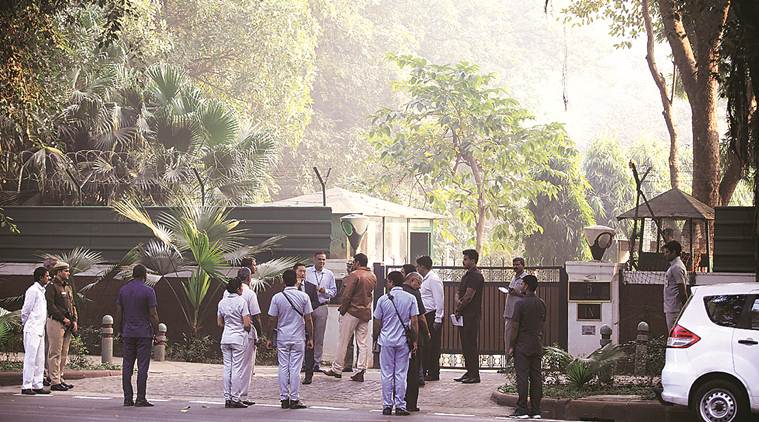While the ruling of the five-judge Constitution bench steered clear of interpreting scriptures and other material related to faith in adjudicating the dispute, one of the judges went into the question and concluded that the disputed structure was the birthplace of Ram as per faith, belief and trust of the Hindus.
“Faith and belief of Hindus as depicted by the evidence on record clearly establish that Hindus believe that at the birthplace of Lord Ram the Mosque was constructed, and (the) three-dome structure is the birthplace of Lord Ram,” his ruling, an addendum to the judgment, stated.

It is not signed by the judge who authored it, nor is there any concurring signature.
For the purpose of evidence, the ruling divided the historic period into three: before 1528, when the mosque is said to have been constructed; from 1528 to October 31, 1858; and from 1858 until 1949.
 The unanimous judgment by a five-judge Constitution Bench brought down the curtains on a dispute that began in 1885.
The unanimous judgment by a five-judge Constitution Bench brought down the curtains on a dispute that began in 1885.
“Religious scriptures, which are main source of Hinduism, are the foundation on which faith of Hindus is concretised,” the judge stated. “It is, however, true that Valmiki Ramayana does not give any description of place of birth, except that Lord Ram was born to Kaushalya at Ayodhya in the Palace of King Dasratha.”
His version also referred to Skanda Purana, believed to have been constructed between 7th and 9th century. It then goes on to cite witnesses who quote the Ayodhya Mahatmya of Skanda Purana as saying that Ram’s birth place is the sanctum sanctorum.
One of them, Jagadguru Ramanandacharya Swami Rambhadra-charya, stated that Ram’s birth place is clearly described in Ayodhya Mahatmya.
Story continues below this ad
READ | Why Hindus won claim over both the outer and inner courtyard at disputed site
The additional version also refers to Janma Sakhies, which speak about the visit of Guru Nanak to Ayodhya for a darshan of Ram’s birth place.
The addendum stated, “…it can, therefore, be held that the faith and belief of Hindus regarding location of birth place of Lord Ram is from scriptures and sacred religious books including Valmiki Ramayana and Skanda Purana, which faith and beliefs, cannot be held to be groundless.”
ALSO READ | Why Supreme Court rejected the Allahabad HC judgment on Ayodhya dispute
Story continues below this ad
For the period 1528 to 1858, the judge cited Ramcharitmanas of Tulsidas, composed during 1574-75 and said it refers to Ram’s birth place. The judge noted that the court can take into consideration the Gazetteers under Evidence Act, 1872, adding that although the statement in Gazetteers will not be treated as conclusive evidence, the presumption of correctness of that statement is attached to it.
For the period 1858-1949, it cited Gazetteers, reports of the Archaeological Survey of India, books and other documentary evidence, which have been exhibited in the suits and other documentary and oral evidence.
The judge wrote, “The oral evidence… clearly proves faith and belief of Hindus that Janmasthan of Lord Ram is the place where Babri Mosque has been constructed. Three-dome structure was treated as birth place of Lord Ram. Worship of the three-dome structure, parikrama of the entire premises by the devotees have been amply proved by oral evidences led in the Suit…”
The addendum noted, “It is thus concluded… that faith and belief of Hindus since prior to construction of Mosque and subsequent thereto has always been that Janmasthan of Lord Ram is the place where Babri Mosque has been constructed, which faith and belief is proved by documentary and oral evidence discussed above.”

 Security outside CJI Gogoi’s residence in Delhi ahead of the Supreme Court verdict on Saturday. (Express photo by Praveen Khanna)
Security outside CJI Gogoi’s residence in Delhi ahead of the Supreme Court verdict on Saturday. (Express photo by Praveen Khanna)
 The unanimous judgment by a five-judge Constitution Bench brought down the curtains on a dispute that began in 1885.
The unanimous judgment by a five-judge Constitution Bench brought down the curtains on a dispute that began in 1885.





